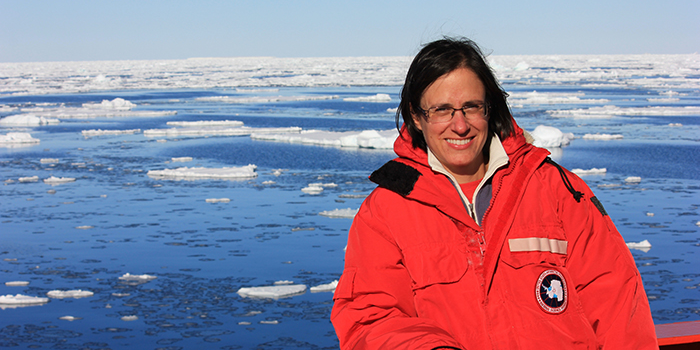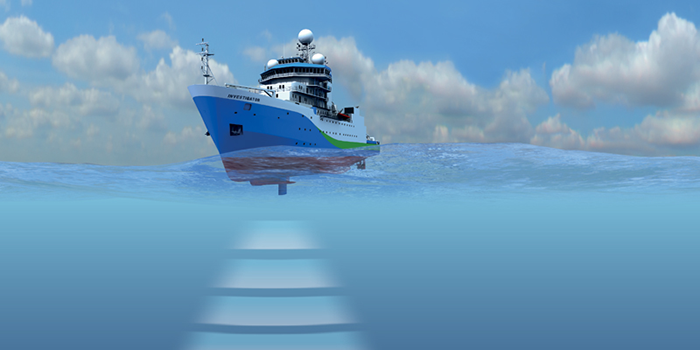News
Investigating the hidden depths of East Antarctica
Published:18 January 2017
Investigating the hidden depths of East Antarctica
Geoscience Australia marine geoscientist Dr Alix Post is heading to Antarctica aboard the Marine National Facility research vessel, the RV Investigator to further her work on the unique marine biodiversity of the Antarctic sea floor.
With an international team of scientists from Australia, Spain, Italy and America, the two month voyage is the RV Investigator's first trip to Antarctica, and will focus on the relatively under-explored area offshore of the Totten Glacier, the largest glacier in East Antarctica.

Geoscience Australia's Dr Alix Post has just set off on a two month voyage to explore the icy waters of East Antarctica
Dr Post's previous work in the area has already demonstrated that there is an amazing diversity of life on the sea floor, with the latest voyage aiming to build further understanding of this unique seabed environment.
The voyage aims to better understand the environmental history of the area, in particular, the response of the Totten Glacier to past climate cycles. Recent analysis indicates that the ice is thinning, and this melting has the potential to contribute to global sea-level rise by up to 3.5 metres.
A range of geophysical data and sea floor images, including seismic profiles and multibeam bathymetry, will be collected to help predict the nature and distribution of biological communities. Understanding the depth, shape and sediment characteristics of the sea floor is particularly important for characterising seabed habitats, and will help scientists to understand past and potential future changes in this system.
The significant biological value of these habitats has already been recognised by its inclusion in the proposed network of Marine Protected Areas (MPAs) for East Antarctica, now under consideration by the Commission for the Conservation of Antarctic Marine Living Resources (CCAMLR). The proposed MPAs contain a diverse array of sea floor habitats and if established would aim to protect a variety of ecological communities representative of the East Antarctic region.

An illustration of the RV Investigator's multibeam system
Further information:
Contact:
Phone:
Email:




